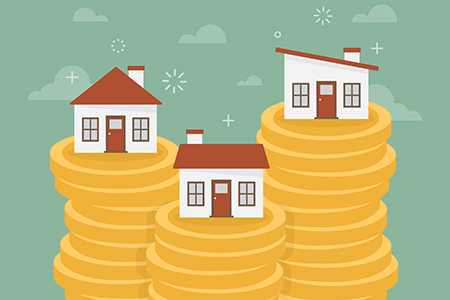New data shows home prices continue to rise across the country over the last 12 months, according to the latest results for the S&P/Case-Shiller Home Price Indices.
The S&P/Case-Shiller U.S. National Home Price Index, covering all nine U.S. census divisions, reported a 5.0 percent annual gain in April, down from 5.1 percent the previous month. The 10-City Composite posted a 4.7 percent annual increase, down from 4.8 percent in March. The 20-City Composite reported a year-over-year gain of 5.4 percent, down from 5.5 percent from the prior month.
Portland, Seattle, and Denver reported the highest year-over-year gains among the 20 cities with another month of annual price increases. Portland led the way with a 12.3 percent year-over-year price increase, followed by Seattle at 10.7 percent, and Denver with a 9.5 percent increase. Nine cities reported greater price increases in the year ending April 2016 versus the year ending March 2016.
Before seasonal adjustment, the National Index posted a month-over-month gain of 1.0 percent in April. The 10-City Composite recorded a 1.0 percent month-over-month increase, while the 20-City Composite posted a 1.1 percent increase in April. After seasonal adjustment, the National Index recorded a 0.1 percent month-over-month increase, the 10-City Composite posted a 0.3 percent increase, and the 20-City Composite reported a 0.5 percent month-over-month increase. After seasonal adjustment, 15 cities saw prices rise, two cities were unchanged, and three cities experienced negative monthly prices changes.
”The housing sector continues to turn in a strong price performance with the S&P/Case-Shiller National Index rising at a 5 percent or greater annual rate for six consecutive months,” says David M. Blitzer, Managing Director and Chairman of the Index Committee at S&P Dow Jones Indices. “The home price increases reflect the low unemployment rate, low mortgage interest rates, and consumers’ generally positive outlook. One result is that an increasing number of cities have surpassed the high prices seen before the Great Recession. Currently, seven cities – Denver, Dallas, Portland Ore, San Francisco, Seattle, Charlotte, and Boston – are setting new highs.”
“Home price growth continues to be driven by an improving employment picture and historically low interest rates,” says Quicken Loans vice president Bill Banfield. “There’s a lot of pent up demand out there, and we’ve been seeing the result of that play out in home prices the past year.”
To view the full report, click here.











